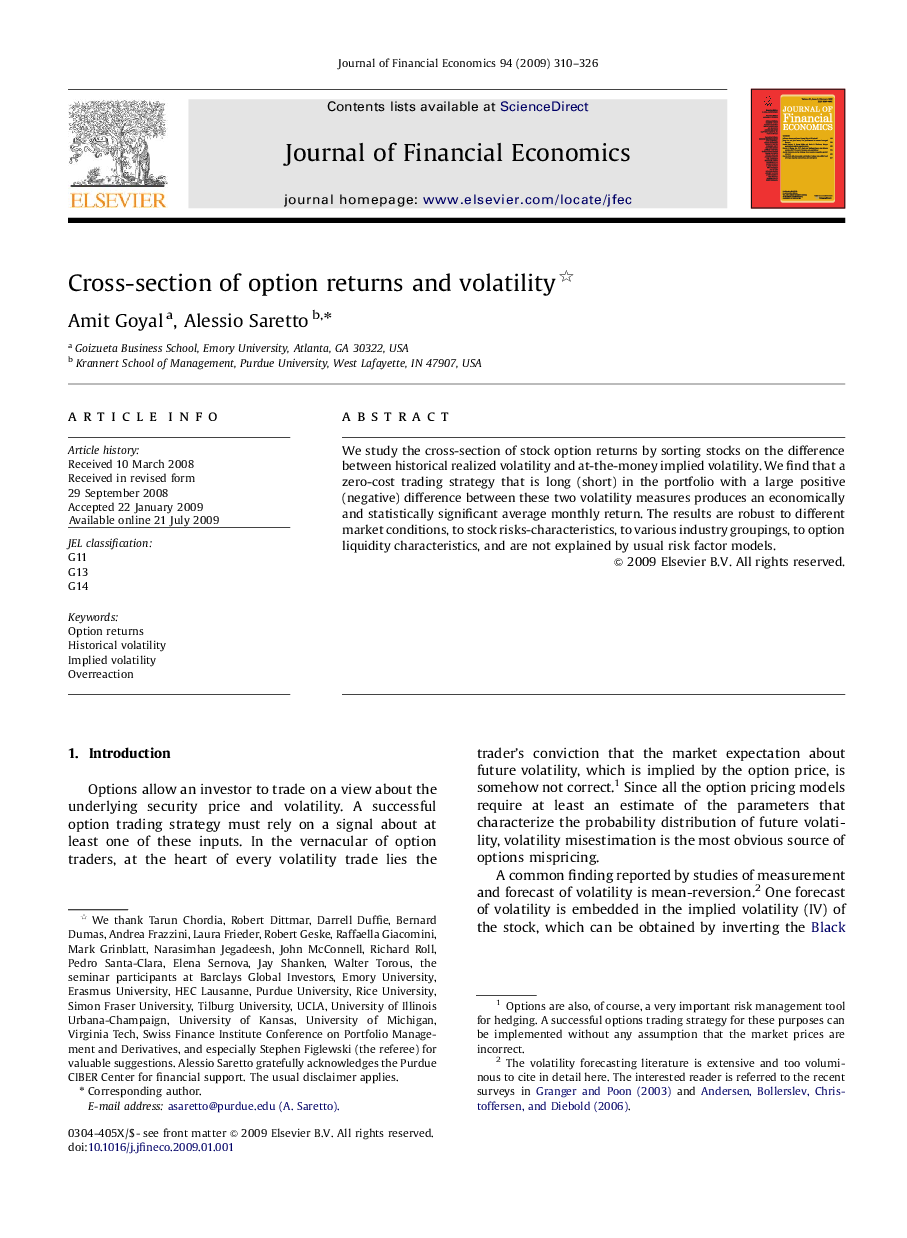| Article ID | Journal | Published Year | Pages | File Type |
|---|---|---|---|---|
| 959846 | Journal of Financial Economics | 2009 | 17 Pages |
Abstract
We study the cross-section of stock option returns by sorting stocks on the difference between historical realized volatility and at-the-money implied volatility. We find that a zero-cost trading strategy that is long (short) in the portfolio with a large positive (negative) difference between these two volatility measures produces an economically and statistically significant average monthly return. The results are robust to different market conditions, to stock risks-characteristics, to various industry groupings, to option liquidity characteristics, and are not explained by usual risk factor models.
Related Topics
Social Sciences and Humanities
Business, Management and Accounting
Accounting
Authors
Amit Goyal, Alessio Saretto,
